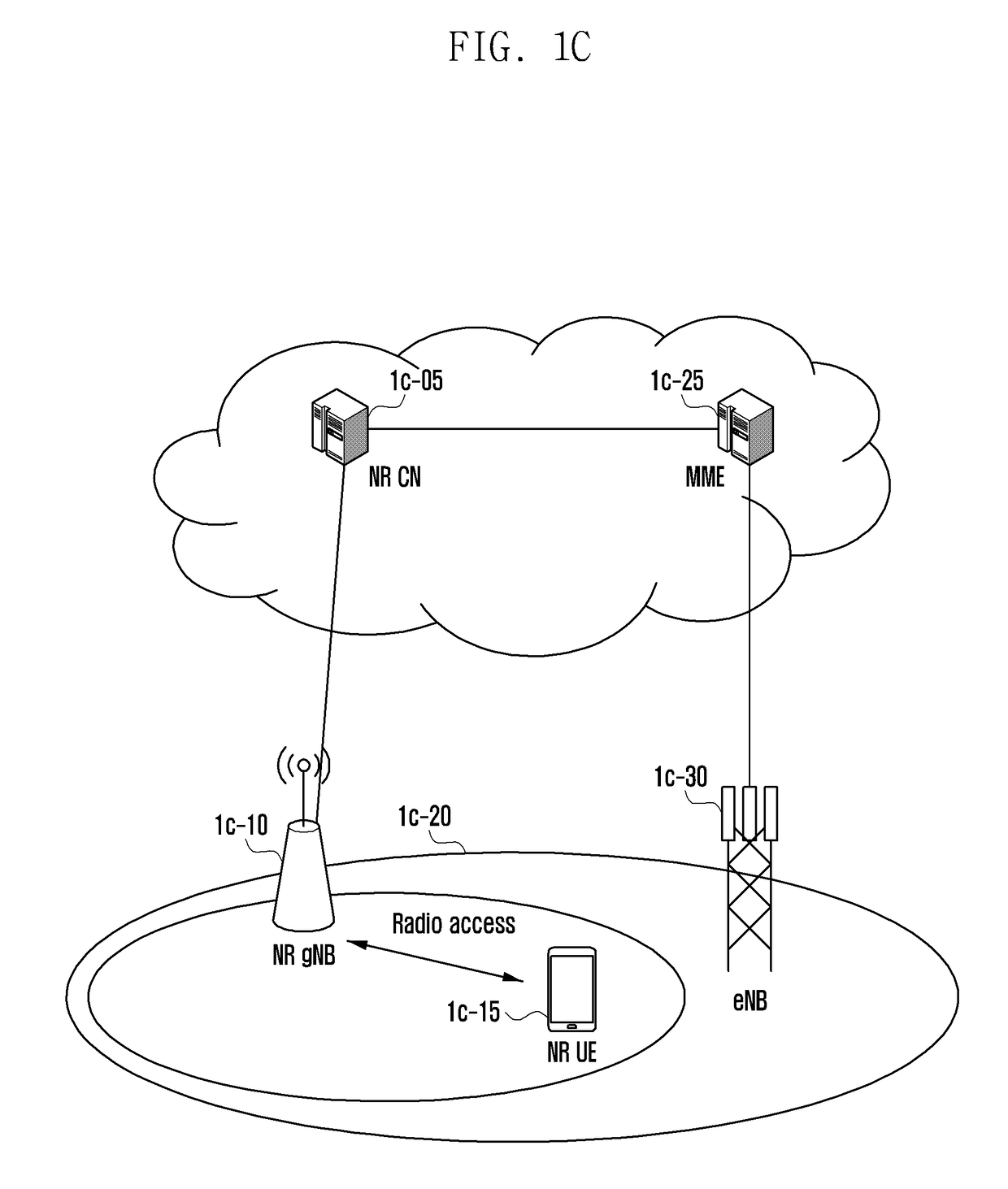Method and apparatus for rapidly reporting frequency measurement results in next generation mobile communication system
- Summary
- Abstract
- Description
- Claims
- Application Information
AI Technical Summary
Benefits of technology
Problems solved by technology
Method used
Image
Examples
first embodiment
[0046]In the following description, terms to denote an access node, network entities, messages, an interface between network entities, and a variety of types of identity information are shown. Accordingly, the present disclosure is not intended to be limited to being described by the following terms, and other terms to denote targets having equivalent meanings may be used.
[0047]In embodiments of the present disclosure, terms and names defined in the 3rd generation partnership project LTE (3GPP LTE) standard or terms and names modified from the defined terms and names are used. However, the present disclosure is not intended to be limited to the terms and names and may be identically applied to systems based on other standards. In one embodiment of the present disclosure, an enhanced node B (eNB) may be interchangeably used with a next generation node B (gNB) for convenience of description. That is, a base station described as an eNB may indicate a gNB.
[0048]FIG. 1A is an illustratio...
second embodiment
[0255]FIG. 2A is an illustration of an LTE system according to an embodiment.
[0256]Referring to FIG. 2A, an RAN of the LTE system includes geNBs (also referred to as eNBs, node Bs, geNBs, or base stations) 2a-05, 2a-10, 2a-15, and 2a-20, an MME 2a-25, and an S-GW 2a-30. A UE 2a-35 accesses an external network through the eNBs 2a-05-2a-20 and the S-GW 2a-30.
[0257]The eNBs 2a-05-2a-20 correspond to the node Bs of an existing UMTS system. The eNB is connected to the UE 2a-35 through a radio channel and performs a more complex function than the existing node B. In the LTE system, all types of user traffic including a real-time service, such as VoIP, through the Internet protocol, are served through a shared channel. Accordingly, a device that performs schedules by collecting state information, such as a buffer state, available transmission power state, and a channel state of UEs, is necessary. The eNBs 2a-05˜2a-20 are in charge of such a device. In general, one eNB controls multiple cel...
third embodiment
[0539]FIG. 3A is an illustration of an LTE system according to an embodiment.
[0540]Referring to FIG. 3A, the wireless communication system includes multiple eNBs 3a-05, 3a-10, 3a-15 and 3a-20, an MME 3a-25 and an S-GW 3a-30. A UE (or terminal) 3a-35 accesses an external network through the eNB 3a-05, 3a-10, 3a-15, and 3a-20 and the S-GW 3a-30.
[0541]The eNBs 3a-05, 3a-10, 3a-15 and 3a-20 are access nodes of a cellular network, and provide radio access to UEs that access a network. For example, the eNBs 3a-05, 3a-10, 3a-15, and 3a-20 collect state information, such as a buffer state, available transmission power state and channel state of UEs, schedules the UEs, and supports connections between the UEs and a core network (CN) in order to serve the traffic of the UEs. The MME 3a-25 is a device responsible for various control functions in addition to a mobility management function for a UE, and is connected to multiple eNBs. The S-GW 3a-30 provides a data bearer. The MME 3a-25 and the S...
PUM
 Login to View More
Login to View More Abstract
Description
Claims
Application Information
 Login to View More
Login to View More - R&D
- Intellectual Property
- Life Sciences
- Materials
- Tech Scout
- Unparalleled Data Quality
- Higher Quality Content
- 60% Fewer Hallucinations
Browse by: Latest US Patents, China's latest patents, Technical Efficacy Thesaurus, Application Domain, Technology Topic, Popular Technical Reports.
© 2025 PatSnap. All rights reserved.Legal|Privacy policy|Modern Slavery Act Transparency Statement|Sitemap|About US| Contact US: help@patsnap.com



